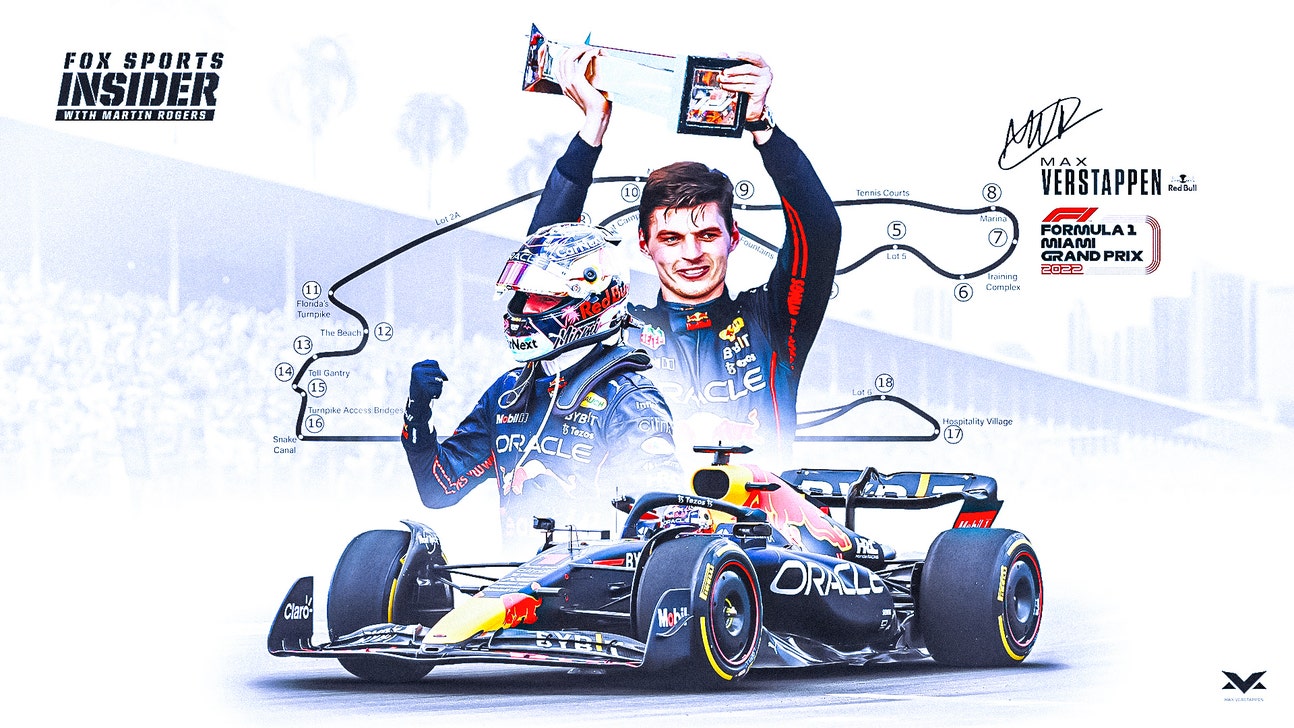
Formula 1 setting new bar in sports innovation
By Martin Rogers
FOX Sports Columnist
Sports, for the most part, are listening to you. They’re trying to get your attention and keep your attention — and they’re not afraid to change in order to do it.
In 2022, you’ll be hard-pressed to find a sports league that isn’t trying to innovate, at least on some level, with a view to expanding its audience and keeping its current fan base happy.
Maintaining the status quo doesn’t really cut it anymore, unless, perhaps, you’re The Masters or Wimbledon. More and more, the leaders of the games we watch are unafraid to tinker with their structure and rulebook, if it means an opportunity to capture a slightly larger piece of the overall sporting pie.
All of which is why the Formula 1 Grand Prix in Miami last weekend was so fascinating. Because F1, currently experiencing a dramatic boom period in the U.S., has actually done far less tinkering to the way its sport works than others.
However, it has enjoyed remarkable growth and is unmistakably cool right now, highlighted by the sparkling array of celebrities that turned up in South Florida for the race, won by Red Bull’s Max Verstappen, on a circuit that sped around the outside of the Miami Dolphins’ Hard Rock Stadium.
Michael Jordan, Tom Brady, Serena and Venus Williams, Patrick Mahomes, and David Beckham headed up the sporting A-listers. Michelle Obama visited seven-time world champion Lewis Hamilton in the Mercedes garage, while countless performing artists and supermodels milled around.
And it seems that this is all the result of an F1 reimagining that took place with the help of a groundbreaking documentary series and some slick marketing that highlighted motor racing’s innate glamour.
More on that later. What is clear is that every sport would love to take an F1-style leap, because such rapid growth is incredibly tough to pull off and monumentally lucrative. Every organization has its own way of trying to spruce things up, but many methods involve changing the details of how the specific sport is played.
Major League Baseball might be America’s oldest pro sports league, but appears committed to innovation, using the Atlantic League as a testing ground for potential future changes, such as robo-umpires, bigger bases, pitch clocks and moving the mound back.
Every year the NFL takes a close look at its rulebook, but as well as finetuning the playoff overtime section for next season an increased emphasis in recent years has been placed on protecting the quarterback, with the dual effect of safeguarding the biggest stars in the sport and also increasing the likelihood of big receiving plays.
As a startup, the USFL was unencumbered by convention and fans have enjoyed enterprising changes such as three-point conversions and additional forward passes, all designed with the overarching goal of entertainment firmly in mind.
Tennis has cut the potential length of the fifth set at its Grand Slams and instituted a first-to-10 "super-tiebreak" for the next year, upon when the shift will be reviewed.
Basketball has wrestled with how to overcome the mind-numbing ending of games that conclude with incessant fouling and free throws. The Elam Ending, a system that involves setting a target score – has already been used in the All-Star Game and it is far from impossible that it sees greater use in the future.
Smaller sports have even more flexibility. Modern pentathlon – derived from activities held at the ancient Olympics and part of the Games since 1912 – is a traditional sport currently doing everything it can to stay relevant.
Under pressure from the International Olympic Committee due to low television ratings, sweeping changes have come in. In recent years, the shooting event was combined with the cross-country run and altered from using pistols to guns that look like they were borrowed from the local laser-tag arcade. Remember the biathlon from the Winter Olympics? Just like that, except the summer version.
Last week, modern pentathlon’s international governing body announced that its historic horse-riding discipline will be scrapped altogether, in favor of an obstacle course run that might look like something from American Ninja Warrior, and is sure to be far more appealing to a younger audience.
In the case of F1, revolution came about in the form of a cinematic unicorn. Netflix’s "Drive to Survive" catapulted the sport into the American consciousness, playing up the intoxicating combination of good-looking drivers racing gleaming vehicles around stunning locations, under the approving gaze of high society.
That’s one way of going about it but it’s not a blueprint, for not every sport lends itself so well to the camera’s lens, nor necessarily has the ability to go down that route.
Either way, whether you are an avowed traditionalist or an embracer of change, know this – it’s all for you. The powers that be are betting on the data that tells them what you want, how you want it, for how much money and for how long.
The fight is on, with sports battling harder than ever to build and retain their position. Whether you like it or not, more change is coming.
Martin Rogers is a columnist for FOX Sports and the author of the FOX Sports Insider Newsletter. You can subscribe to the newsletter here.
